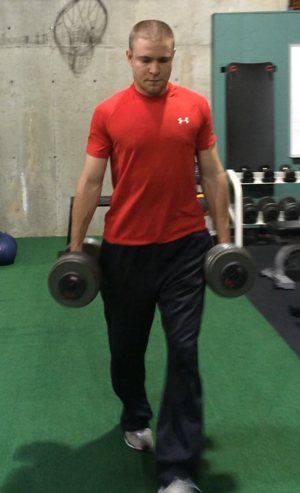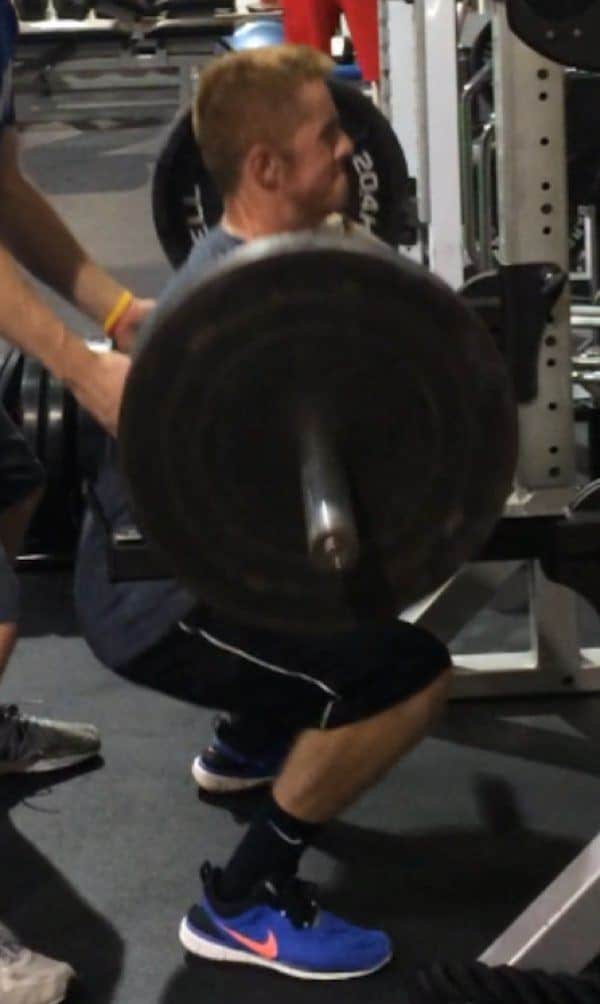How and Why You Should Work on Grip Strength
Grip strength may be one of the most important, yet overlooked, area of athletic development. Hockey players constantly have sticks in their hand. Baseball players wear gloves on one hand and throw a ball in the other. Basketball players are constantly dribbling. Golfers hold a club in their hand. Football players are holding off defenders, receivers and backs run with the ball in their hands. As we see, in athletics we are always using our hands.
We know that strength helps us in our respective sports. For the upper body and lower body, our hands are our last line of defense. If you are deadlifting and can’t hold on to a heavy barbell, your legs are suffering because of the hands being a weak link. Increasing that grip strength is important not only to bring up that weak link in the weight room but also on the field, court, or ice.
How do we work on grip strength?
Just stand up, grab a stress ball and go to town! Ok, we are going to work a little harder than that, but focusing on grip strength is important. When choosing exercises to improve our grip, we have different categories and variations. Let’s take a look at some different ways of improving our grip.
Plate Pinches
Plate pinches involve grabbing a hold of a standard Olympic Plate and squeezing it with our fingers. We can perform a static hold of the plate by gripping and standing in place or we can make it a little tougher by walking with the plate in our fingertips. Depending on the weight of the plate, we also get some added core work because we are walking with more weight one side than the other, requiring our core to stabilize out trunk. This is a great way to incorporate more grip strength on suitcase carries. We can also make it tougher by pinching a thicker bumper plate. The added thickness of bumper plates helps add to the difficulty!
Farmer Carries
Farmer carries are one of my favorite exercises for improving grip strength. Such an easy concept. Pick up a couple heavy objects and walk around with them. Truthfully, there is a bit more to it than that.
Choose a pair of heavy dumbbells or kettlebells (or if you have access to farmer walk handles, all the power to you). Grip those dumbbells tight and now begin to walk with them. Use short choppy steps at a faster pace than walking but slower than speed walking. Make sure to pull your shoulders back, stand up tall, and squeeze your abs tight. A couple different schemes to try could be to use two really heavy weights for a short distance or a tad lighter weights for a longer distance.

Adding thickness to your everyday exercises
Another great option to improve grip strength is to add thickness to the handles of dumbbells, cables, or bars. Let’s take a simple dumbbell bicep curl. We can add an implement such as Fat Gripz, Globe Gripz, or even a towel or a thin diameter rope to the handle of the dumbbell. We have now made the dumbbell handle thicker.
In turn our hand is now more open than with the dumbbell alone. Holding a thicker object requires you to squeeze harder or else the object will fall out of your hands. In this case, that would be the dumbbell. With that extra squeeze, our wrist flexors and extensors are working overtime to hold on to the weight. This can be applied to many other barbell exercises and dumbbell exercises. Although I never program a specific grip exercise if it takes away from my goal of getting strong. For example, I won’t program a fat grip deadlift or bench press if I am focusing on getting as strong as possible in that movement. I never want one thing to compromise another. However, focusing on your grip during these exercises in your program may help you see greater gains later in your programming.
Other direct forearm exercises and variations
Many people forget simple forearm exercises to improve grip strength. Perhaps people think they are too “boring,” but I don’t mind using a “boring” exercise if it is effective.
Place your hand out in front of you so that you are looking at your palm. This side of the forearm that you are looking at is responsible for most of your grip strength. These wrist flexor muscles help to close the hand and squeeze your hand tight as if you were making a fist. We can directly work these muscles by performing wrist curls, or reverse wrist rolls. These aren’t my all time favorites because you can get more bang for your buck using other methods that help benefit other muscles as well, but they are worth mentioning. Speaking of other muscles, this leads me to my last point.
Just lift heavy things…
I’m really just saving the best for last here. The number one way to help improve your grip strength as well as many other benefits is to just progress by lifting something heavier than the last time. The more and more you are holding a barbell or a dumbbell for lunges, bench presses, rows, and bicep curls, you name it, the more the flexors and extensors in your wrist and forearm have to work.
Here is another added bonus, the harder you squeeze a dumbbell or barbell, you help recruit surrounding muscles groups. This is called the Law of Irradiation. Irradiation is the ability of one muscle when it tenses strongly to recruit the tension of nearby muscles. If you are to make a fist and squeeze tightly enough you can feel tension travel up your arm and activate your biceps and triceps. The harder you grip, the more muscle used, the more muscle used, the stronger the muscle gets, the stronger the muscle gets, you can use more weight. And the cycle continues.
As a great example, one of my favorite exercises is the deadlift. If you have never deadlifted before, you really ought to start (but that’s a whole other topic). The deadlift is one of the heaviest exercises we can perform. When was the last time you had hundreds of pounds in your hands? Moving that kind of weight forces you to grip that bar tight and will for sure add up and make your grip stronger.
When to Use Gripping exercises
All of these grip strength variations can be added to your program at various times. At Champion, our heavy lifts, such as a deadlift, are performed at the beginning of the session, as it is the most taxing to our central nervous system. But, most of these types of grip exercises are used here at Champion at the end of the training session. Performing farmer carries at the end of the training session can be beneficial as a nice finisher to get the heart rate up as well. If in a case that grip strength was a priority, then we could move some of these to the beginning or throughout the program.
Give some of these grip exercises and methods a shot to help increase that grip strength and watch how it will help increase your performance in other areas.










